
Ascidia is a genus of tunicates in the family Ascidiidae.

Pyura is a large genus of sessile ascidians that live in coastal waters at depths of up to 80 m (260 feet). Like all ascidians, Pyura are filter feeders. A few species, including Pyura chilensis are commercially fished.

Microcosmus is a genus of tunicates in the family Pyuridae, containing the following species:

Didemnum is a genus of colonial tunicates in the family Didemnidae. It is the most speciose genus in the didemnid family. Species in this genus often have small calcareous spicules embedded in the tunic and form irregular or lobed colonies. Some Didemnum species, including Didemnum vexillum and Didemnum perlucidem are considered invasive species. In early 2006, Didemnum vexillum was found covering a 230 km2 area of cobble habitat in Georges Bank off the coast of New England, and is classified as an invasive species of greatest concern in coastal areas throughout Europe, New Zealand, and North America. Didemnum sp. invasions have also been recorded in Canada, the Mediterranean, and the Netherlands.

Clavelina is genus of sea squirts, containing the following species:
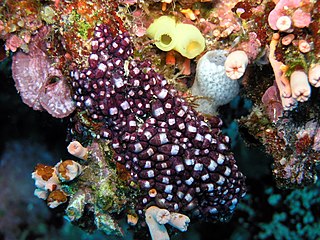
Eusynstyela is a genus of ascidian tunicates in the family Styelidae.

Phlebobranchia is an order of sea squirts in the class Ascidiacea, first described by Fernando Lahille in 1886.

Ecteinascidia turbinata, commonly known as the mangrove tunicate, is a species of tunicate in the family Perophoridae. It was described to science in 1880 by William Abbott Herdman. The cancer drug trabectedin can be isolated from this species.
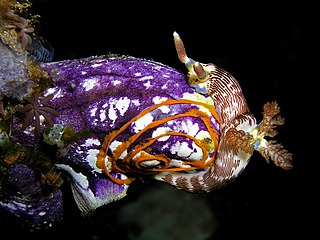
Polycarpa is a genus of ascidian tunicates in the family Styelidae.
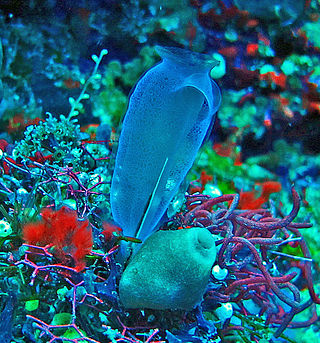
Rhopalaea is a genus of tunicates belonging to the family Diazonidae. The genus has a cosmopolitan distribution in warm and temperate oceans.
Perophora viridis, the honeysuckle tunicate, is a species of colonial sea squirt in the genus Perophora found in the tropical western Atlantic Ocean.
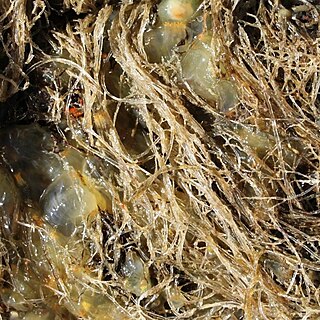
Amathia verticillata, commonly known as the spaghetti bryozoan, is a species of colonial bryozoans with a bush-like structure. It is found in shallow temperate and warm waters in the western Atlantic Ocean and the Caribbean Sea and has spread worldwide as a fouling organism. It is regarded as an invasive species in some countries.
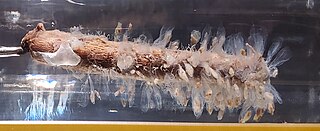
Perophora regina is a species of colonial sea squirt in the genus Perophora. It is native to the tropical western Atlantic Ocean where it is found growing on mangrove roots on the Belize Barrier Reef.
Perophora multiclathrata is a species of colonial sea squirt in the genus Perophora. It is native to the tropical Indo-Pacific and the western Atlantic Ocean.
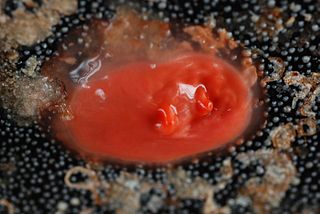
Cnemidocarpa is a genus of ascidian tunicates in the family Styelidae.
Polyandrocarpa is a genus of ascidian tunicates within the family Styelidae.
Stolonica is a genus of ascidian tunicates in the family Styelidae.

Symplegma is a genus of ascidian tunicates in the family Styelidae.
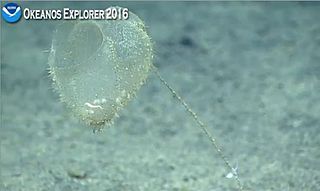
Culeolus is a genus of ascidian tunicates in the family Pyuridae.

Leptoclinides is a genus of tunicates belonging to the family Didemnidae. The genus has a cosmopolitan distribution.
















